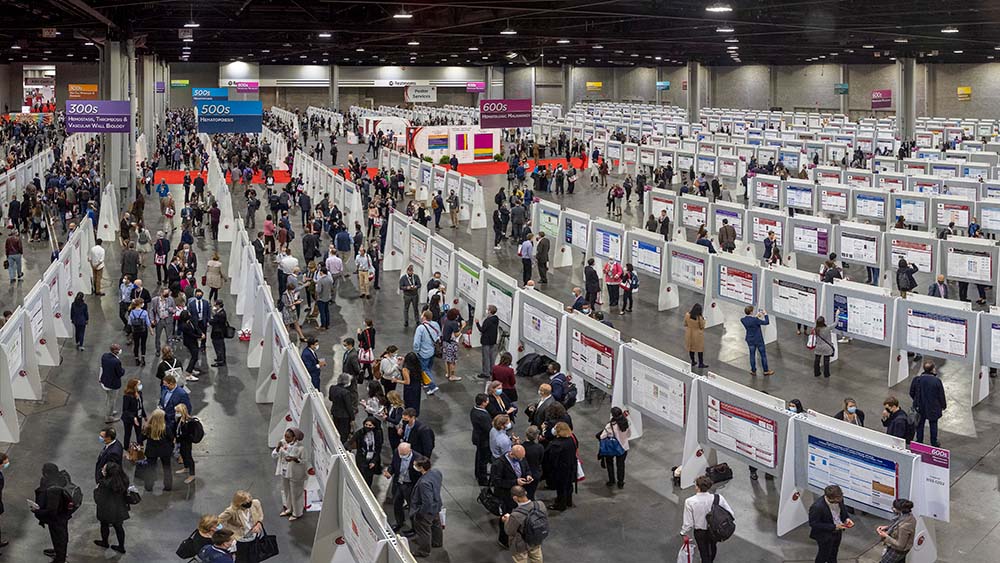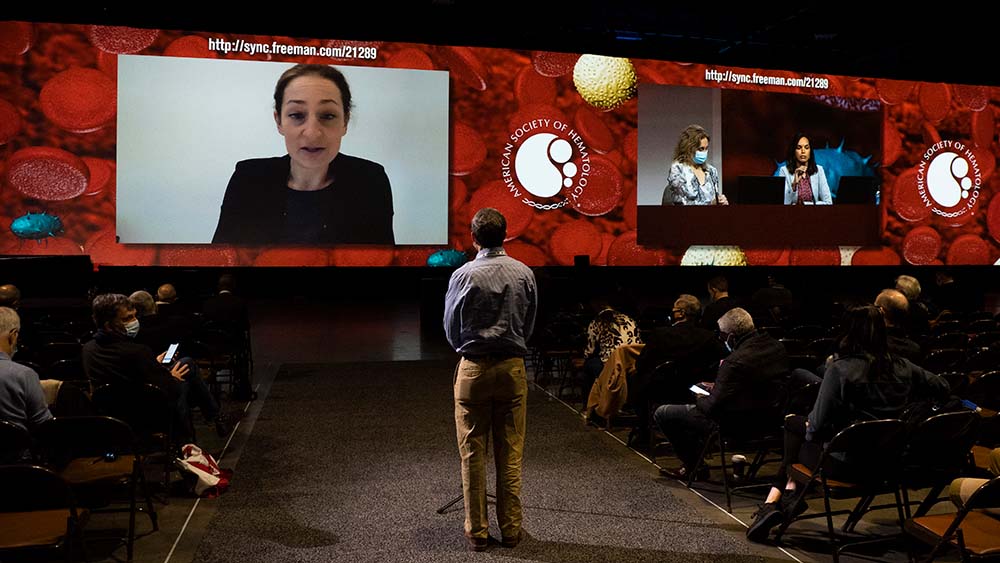
The American Society of Hematology (ASH) is aiming to restore its pre-pandemic in-person participation at the same time it cultivates a larger online audience.
The changes brought about by the pandemic have created “the best period” in his long career in the business events industry, said Bill Reed, FASAE, CMP. What Reed, chief event strategy officer, American Society of Hematology (ASH), loved most about this time, he told participants in an online PCMA Community Conversation for medical meeting planners earlier this year, is probably what other planners have hated: “We needed to operate when there was really no roadmap to us,” Reed said.
“I love this environment” of experimentation, he said, and is puzzled by medical meeting professionals who say that they are eliminating their virtual event option “now that the pandemic is over”— which ignores the science that COVID-19 remains with us and also cancels out any gains made by growing a virtual audience during lockdowns. “I’m a firm advocate that hybrid events are here to stay,” Reed said. “We’re leaning into them. Our audience really has grown to expect choices and the hybrid event is the ultimate choice.”
Reed outlined the approach the 2021 ASH Annual Meeting, held Dec. 11-14 in Atlanta, took for both audiences and ASH’s strategy going forward:
Then and Now
In 2020, like many other organizations, ASH’s Annual Meeting was fully virtual. For the 2021 event, the registration price for face to face and digital was the same, and the event produced equivalent content for both audiences. The registration fee was structured according to the length of access to the online content, with prices increasing for each month of continued access.
Programs ran simultaneously for online and in-person audiences with livestreamed content. With the combined in-person and digital audience, ASH reached its pre-pandemic attendance level of 30,000, with 13,000 in-person attendees — setting a net income record due to the smaller in- person component.
Reed’s approach for the 2022 ASH Annual Meeting, Dec. 10-13 in New Orleans, is to create “two distinct offerings and two loyal audiences.” The goal is to bring the in-person component to 23,000 while also growing the digital audience, for a total of more than 35,000. For the 2023 Annual Meeting, the aim is to bring the in-person attendance back up to 30,000 and grow the digital audience to 15,000 registrants, for a total of 45,000.
Key to that strategy, Reed said, is building “a virtual audience that is loyal to that option by bringing in new participants who would never travel to the ASH Annual Meeting regardless of where it was located. They prefer a virtual option, and we’re going to build that to become a self-sustaining option for the future. We are able to deliver scientific discoveries that are presented at the annual meeting to hematologists who would not travel. We must accept the fact that not every hematologist can come to the annual meeting — someone has to stay behind in the clinic and the research labs, so this is a mechanism to deliver the education to them in a timely fashion. It also gives us the ability to draw in an audience of allied health professionals.”
ASH has no plans to grow in-person attendance beyond 30,000. Once you cross that mark, Reed said, the quality of the in-person experience diminishes. “It gets more crowded,” he said, and harder to find who you’re looking for.
The ASH meetings team, five full-time staff members, served as “generalists,” Reed said, working on both the in-person and digital components, until they got to execution. Consultants were brought in to assist three months out, he added, because it can be cumbersome to oversee the in-person and virtual experiences simultaneously.
Here’s how this year’s event will take shape, based on the lessons of 2021:
- In-person speakers and poster presenters — In 2021, speakers were allowed to be remote due to the pandemic. “We would like to reduce our complexity by having all of the speakers in one location where we can control internet quality,” Reed said. Moreover, he found that “when there is a remote speaker, your in-person audience is tempted to let their attention wander, and we think that’s a bad thing from an experience perspective. With an in- person speaker, the audience is engaged. People want to engage with speakers at the end of their session.”
- Limiting the virtual exhibit hall to 50 exhibitors — “We learned that trying to satisfy over 200 companies’ expectations in the virtual exhibit hall was really a daunting task,” Reed said. “We have three different tiers of participation in the virtual exhibit hall, limiting the highest level to an exclusive number of companies, so that we can deliver really great value for a smaller number of the premier exhibitors.”
Reed said that he thinks planners shouldn’t be “hyperfocused” on the costs associated with a hybrid event, and that “if you build your business model correctly, you can make more money. Don’t give up on the virtual just because it’s currently expensive for you — think of it as an investment,” he told the Community Conversation participants. “Make sure that you’re examining the business model you’re using because there’s more to be gained by tinkering with that than throwing away the virtual.”

At the 2021 ASH Annual Meeting, there were fewer attendee interactions with on-screen speakers than with in-person presenters.
Data Driven
With a hybrid event, “we now have an amazing amount of participant data available to us to better understand our customers,” ASH’s Bill Reed said. “That will help us drive the construction of our event in the future, harnessing that data that is in different silos between registration data in our CRM, participant data in the virtual meeting platform, and RFID data from tracking who’s in session rooms.”
Reed said he was “astounded” by how many in-person participants were multitasking — sitting in one session room while connected to the virtual meeting platform on their device, tapping into a second session room simultaneously. He also saw people sitting in common areas to watch livestreamed content.
“That is a whole new experience and behavior that we need to better understand,” he said, in terms of “who is doing that and why are they doing that. That’s what will drive satisfaction going forward, so we don’t assume the reasons why people come to the in-person event.”
Michelle Russell is editor in chief of Convene.
